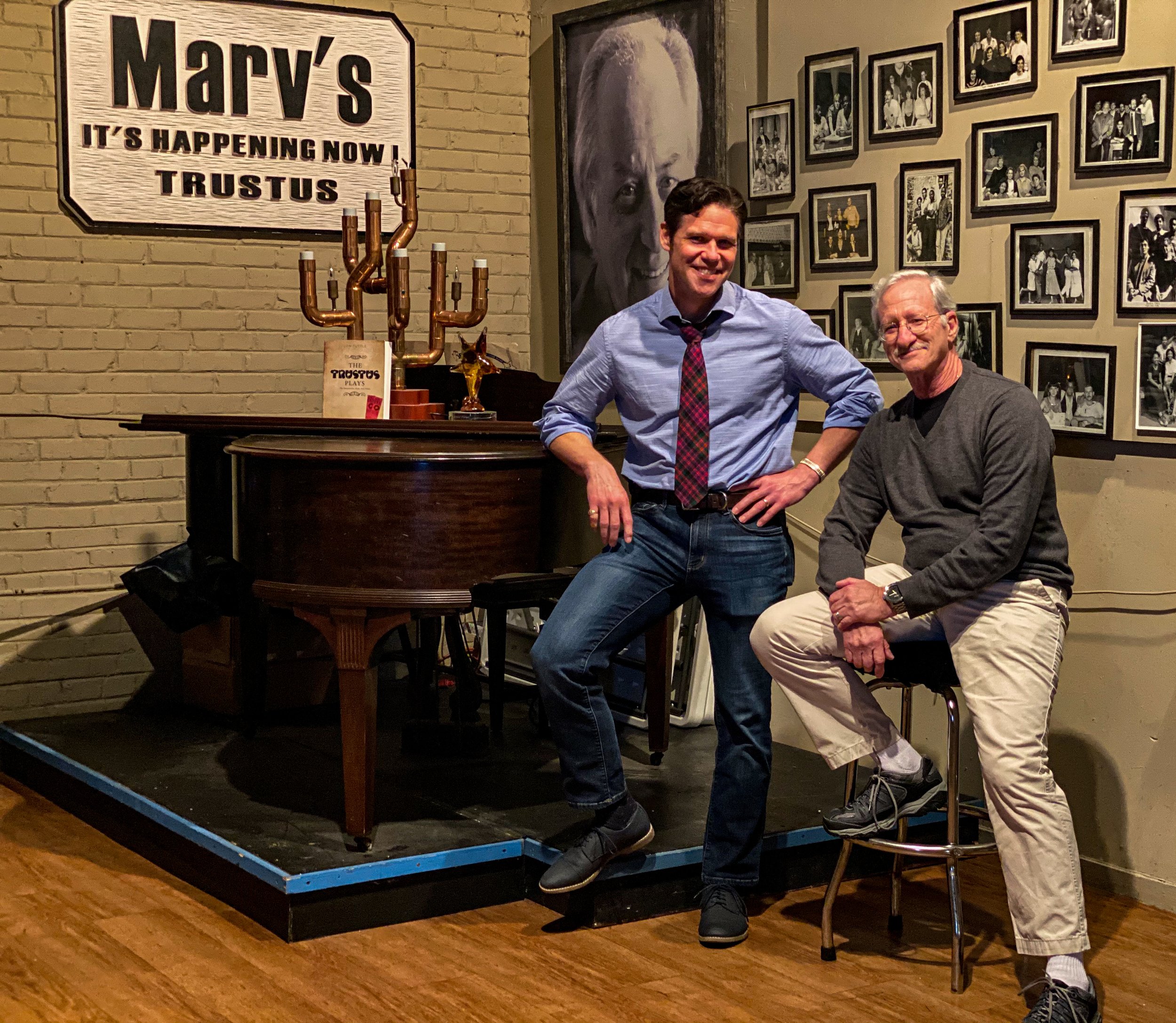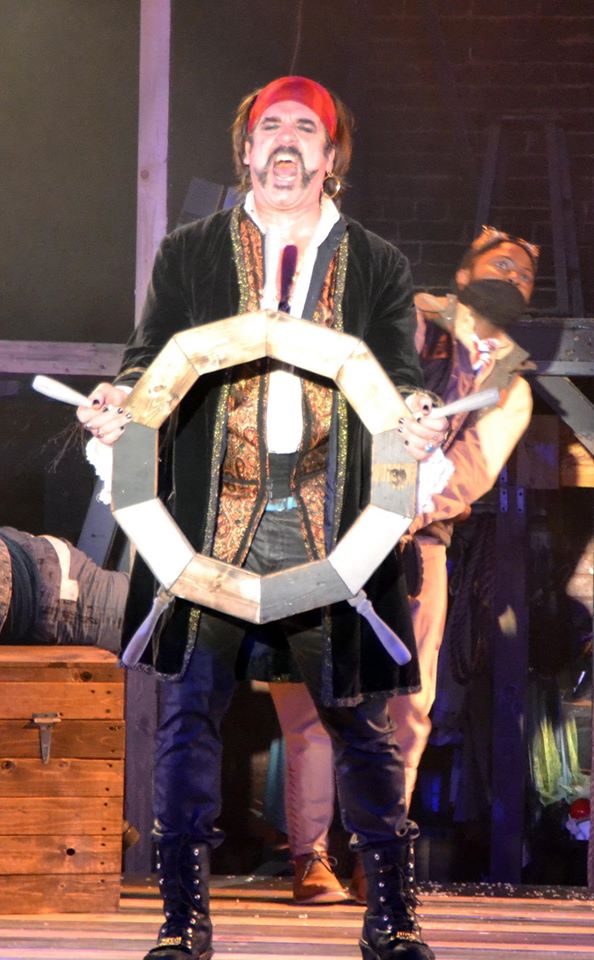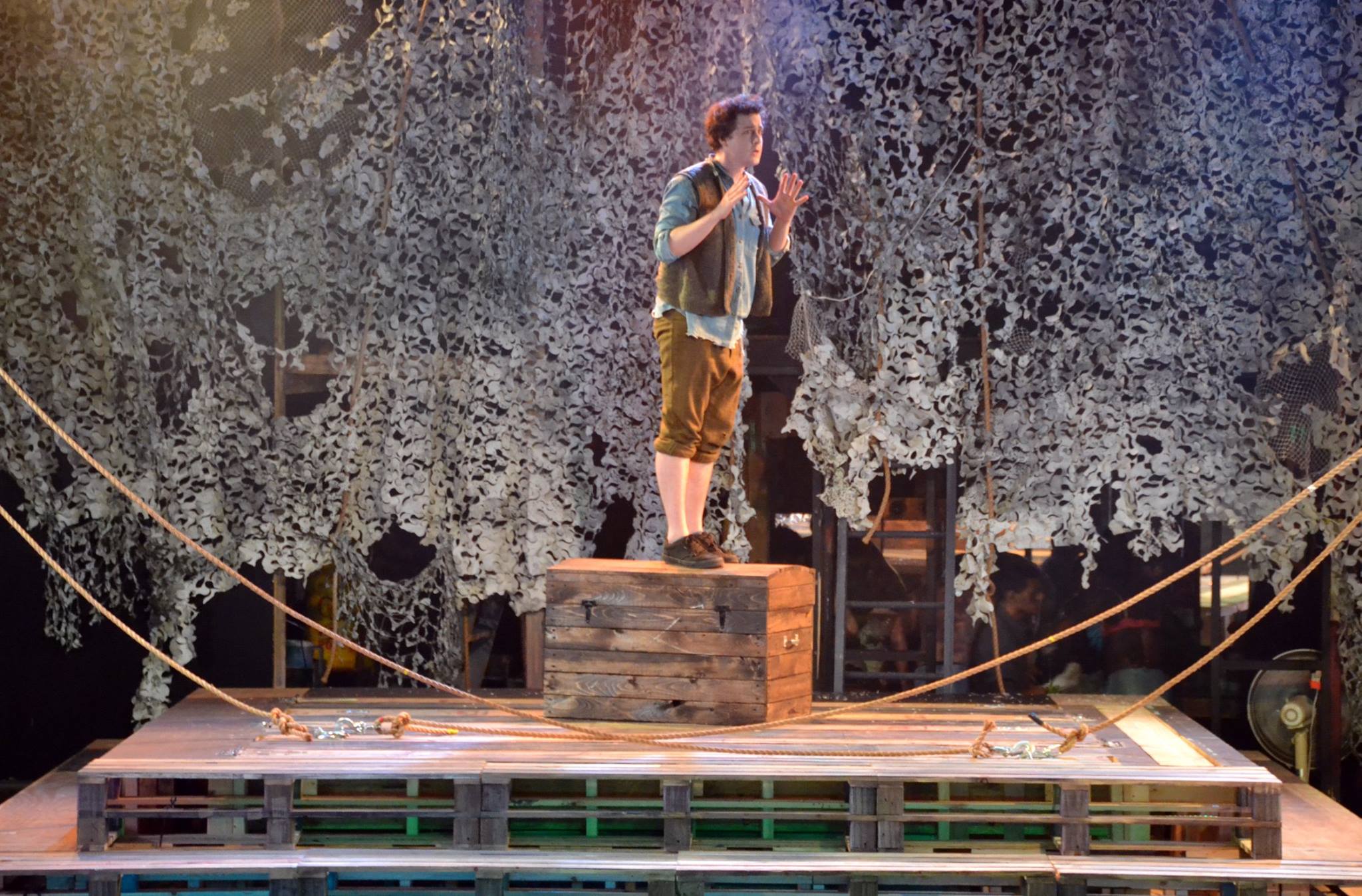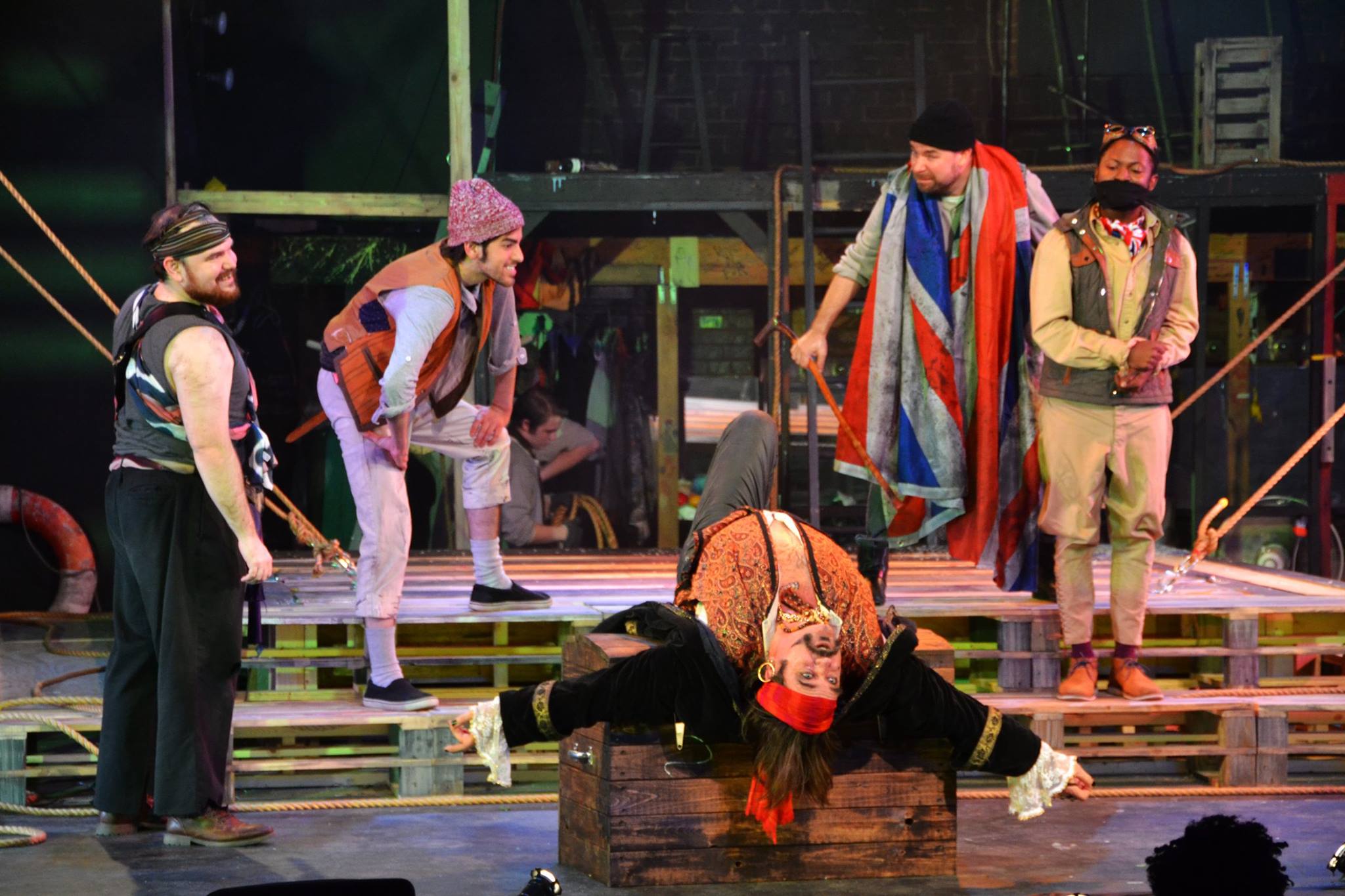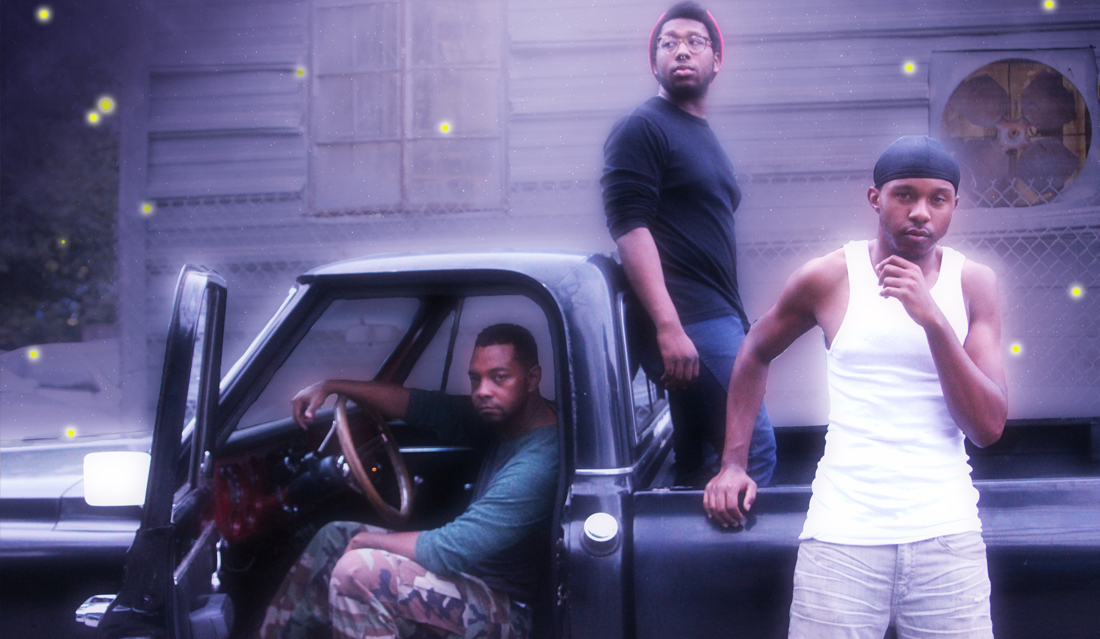Trustus Theatre opened Aaron Posner’s Stupid Fucking Bird down on Lady Street on February 9th, under the direction of the theatre’s Executive Director, Jessica Francis Fichter. This play, which is advertised as “kinda based on” Anton Chekhov’s The Seagull, is a 2.5-hour experience that is “kinda” a comedy that explores family, love, unfulfilled potential, freedom, destruction, and art (all present in the source material on which it was kinda based). Trustus’ production is a winning moment for the theatre with a talented ensemble, adventurous technical execution and a team that not only had a deep understanding of what they wanted to try to do, but the expertise to make it a reality.
Chekhov’s play is not essential to the audience’s engagement with Bird. Academics (read: theatre nerds) will enjoy the fun game of compare-and-contrast that this work allows, but the non-historian will be plenty occupied with experiencing the characters’ journeys, interacting with the actors in an environment without a fourth wall, exploring a dialogue regarding the authentic self and inviting their brains to ask, “what is art, why do we make it and why is it vital…or is it?”
Stupid Fucking Bird concerns a stormy front of romantic and emotional entanglements amongst a family and their friends gathered at a large beach house. Conrad (Patrick Dodds) loves Nina (Cassidy Spencer), but Nina pines for Trigorin (Laurens Wilson) who is dating Conrad’s mom, Emma Arakdina (Erin Wilson). But wait, there’s more! Conrad’s platonic pal Mash (Martha Hearn) languishes for Conrad, and Dev (Cameron Muccio) swoons for Mash. The term “love triangle” doesn't suffice to explain the plot. Perhaps the geometrists in the crowd can do the math.
As with all Chekhov and related materials, there must be an estate. Enter Dr. Eugene Sorn (Hunter Boyle), for whose attention all of these lover-friends are wrestling. Sorn is the only character who doesn’t have a love interest and is quite often the only sensible person in the room. Sorn’s questioning of whether we are ever our authentic selves is a particularly salient moment in the play.
While there is a lot of frustration in watching these characters chase their misguided obsessions, the rewarding part of the Stupid Fucking Bird is the opportunity to engage in a discussion about art. Trustus is no stranger to material that has asked Columbia audiences to engage in this conversation (i.e. Yasmina Reza’s Art and Stew’s Passing Strange), and this type of work starts the dialogue within the walls of the theatre that evolves into colorful debate once you’ve cozied up to a bar afterwards.
Trustus’ Bird has an excellent cast - not a weak link on stage. These are talented actors tackling challenging material, and they are in complete ownership of the proceedings. Patrick Dodds’ has played a wide range of roles since his first appearance at the theatre in 2011, but his portrayal of Conrad has probably been one of the most demanding jobs he’s taken on - and he delivers. Dodds succeeds in making us believe in his journey from obsession to destruction. His monologue towards the end of the first act, combined with the tech that was used, is jarring in the best kind of way.
Erin and Laurens Wilson, in the roles of Emma and Trig, are a grounding and necessary presence for this cast which otherwise portray forlorn nihilists who refuse to stop thwarting themselves. Cameron Musccio makes a welcome debut on the Thigpen Main Stage with his Dev being an incredibly endearing straight-man-who-gets-the-laughs. Cassidy Spencer and Martha Hearn, as Nina and Mash respectively, turn in anchored performances. Hunter Boyle as Dr. Sorn exhibits more control and firmness than we’ve seen in recent years, and it is a delightful change of pace that leaves us hoping to see Boyle explore more roles like this - because it’s really really good.
The production team deserves high marks for a finely-tuned scenic, lighting, media, and sound design package. From moons that seamlessly cross the entire stage, to the simplicity of scene titles - Matt Pound has used different media outputs to make something quite complicated seem seamless. Paired with Marc Hurst’s sizzling lighting and Teddy Palmer’s use of the space as an abstraction of frames - these elements truly make you feel like you’re watching a production that was tailored down to the last stitch. We would also like to note that there is even a Shen Yun poster hidden in the mix (which can lead to a tangential conversation about art after the show).
Though some music levels could be increased to improve audience-immersion throughout and tattoos could be better covered-up (or not covered?) as to not distract, Stupid Fucking Bird is a tight vehicle for the actors, designers, and audience. This is probably due to the work of Director Jessica Francis Fichter. We are very glad her voice is more prominent in Columbia’s theatre scene these days and look forward to more.
If you’re into light comedic fare that intends to entertain by way of jazz hands, this is no play for you. However, if you’re just the slightest bit adventurous, enjoy conflict and the promise of a post-show arts salon: trust Trustus with this play. This is the kind of work that the theatre’s co-founders intended the theatre to produce, and true to form - whether you actually like the play or not - this is the only place you can experience work like it in these parts. Stupid Fucking Bird runs through February 24th at Trustus (520 Lady St.), and you can get your tickets to make up your own mind about this production at www.trustus.org.
(edited 2/11/24)






